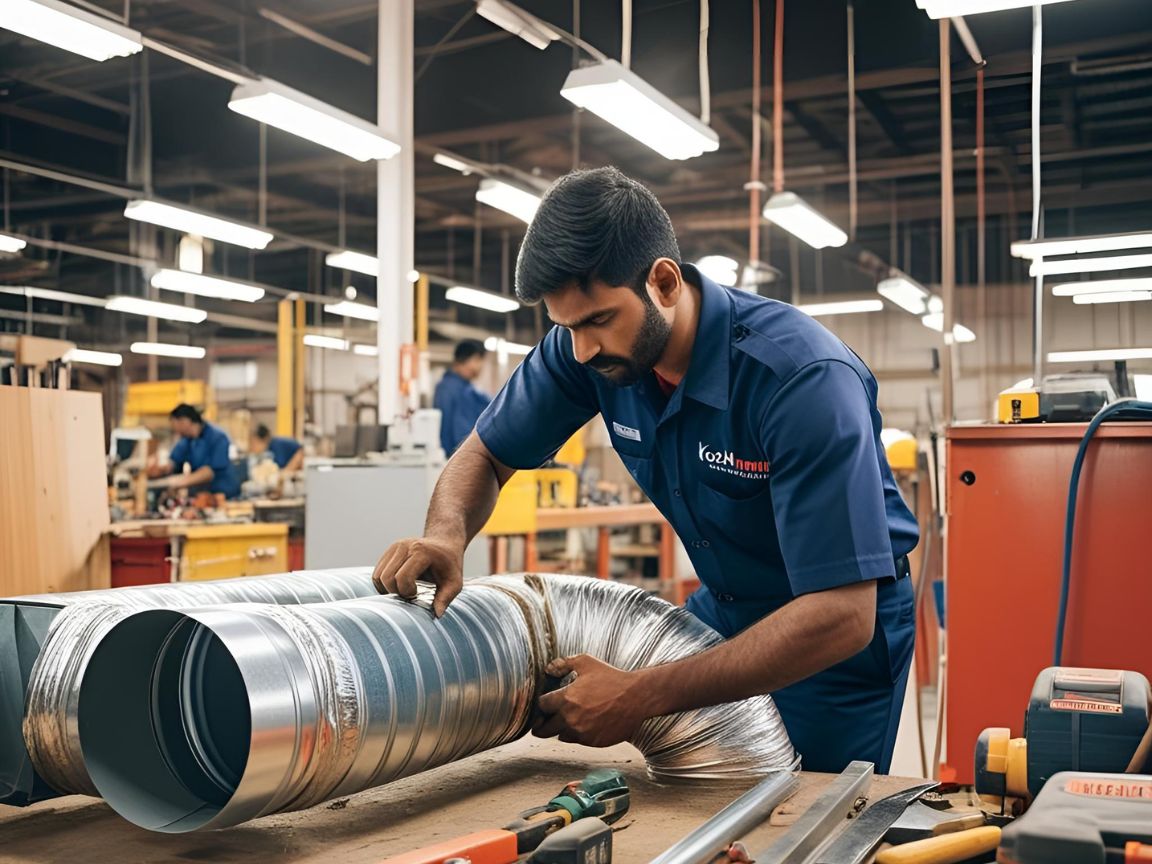Specialized Duct Work
Specialized Duct Work
In India’s rapidly growing infrastructure and real estate sectors, HVAC (Heating, Ventilation, and Air Conditioning) systems have become a critical component of building design. At the heart of these systems lies ductwork — the network of passages that distributes air throughout a building. While standard ductwork suffices for many residential and small commercial setups, specialized ductwork is essential for large-scale, high-performance, and sensitive environments such as IT parks, hospitals, malls, industrial plants, and clean rooms.
This article explores the significance, types, materials, design considerations, and market trends of specialized ductwork in the Indian HVAC sector.

Comprehensive Guide to Specialized Ductwork in India
1. Importance of Specialized Duct Work
- Thermal efficiency: Ensures minimal heat gain or loss during air transmission.
- Indoor air quality: Supports better filtration, humidity control, and pollutant containment.
- System performance: Enhances the overall functioning of HVAC units through balanced air pressure and precise airflow.
- Safety compliance: Critical for fire-rated ducts, smoke evacuation systems, and cleanroom standards.
2. Types of Specialized Duct Work
- Pre-Insulated Ducts (PIR/PUF): Lightweight and thermally efficient, ideal for commercial and healthcare applications.
- Fire-Rated Ducts: Fire-resistant ducts compliant with BS 476 Part 24 and Indian standards.
- Acoustic Ducts: Noise-reducing ducts used in theaters, offices, and hotels.
- Stainless Steel Ducts: Corrosion-resistant ducts for cleanrooms and industrial applications.
- Flexible Ducts: Easy-to-install ducts suitable for ceiling spaces and low-pressure systems.
3. Materials Used
- Galvanized Iron (GI)
- Aluminum
- Stainless Steel
- PUF/PIR Panels
- Fabric Ducts
4. Design and Engineering Considerations
- Load Calculations: Accurate heat load estimates using tools like HAP and Trace 700.
- Duct Sizing & Layout: Static regain and equal friction methods for airflow optimization.
- Insulation: Vital in hot climates; materials include PUF, fiberglass, and nitrile rubber.
- Leakage Prevention: Must adhere to SMACNA standards.
- Compliance: ISHRAE, NBC, ECBC, and IGBC guidelines.
5. Installation Practices
Common techniques include CNC plasma cutting, flange and cleat jointing, on-site sealing and testing, and the use of prefabricated modules for efficiency and precision.
6. Maintenance and Commissioning
Includes mechanical brushing, negative pressure vacuuming, UV-C sanitization (for healthcare), pressure testing, and system calibration.
7. Market Trends in India
- Increased demand due to green buildings and energy awareness.
- Growth in IT, healthcare, and warehousing sectors.
- Smart Cities and Make in India driving ductwork innovation.
- Use of BIM and 3D duct modeling in large projects.
Regions like Delhi NCR, Mumbai, Pune, Bengaluru, and Hyderabad are hubs for specialized duct manufacturing and services.
Specialized ductwork is a necessity in India’s dynamic HVAC environment. With increasing demand for energy efficiency and air quality, stakeholders must prioritize high-performance duct systems right from the design phase to ensure long-term sustainability and operational excellence.
